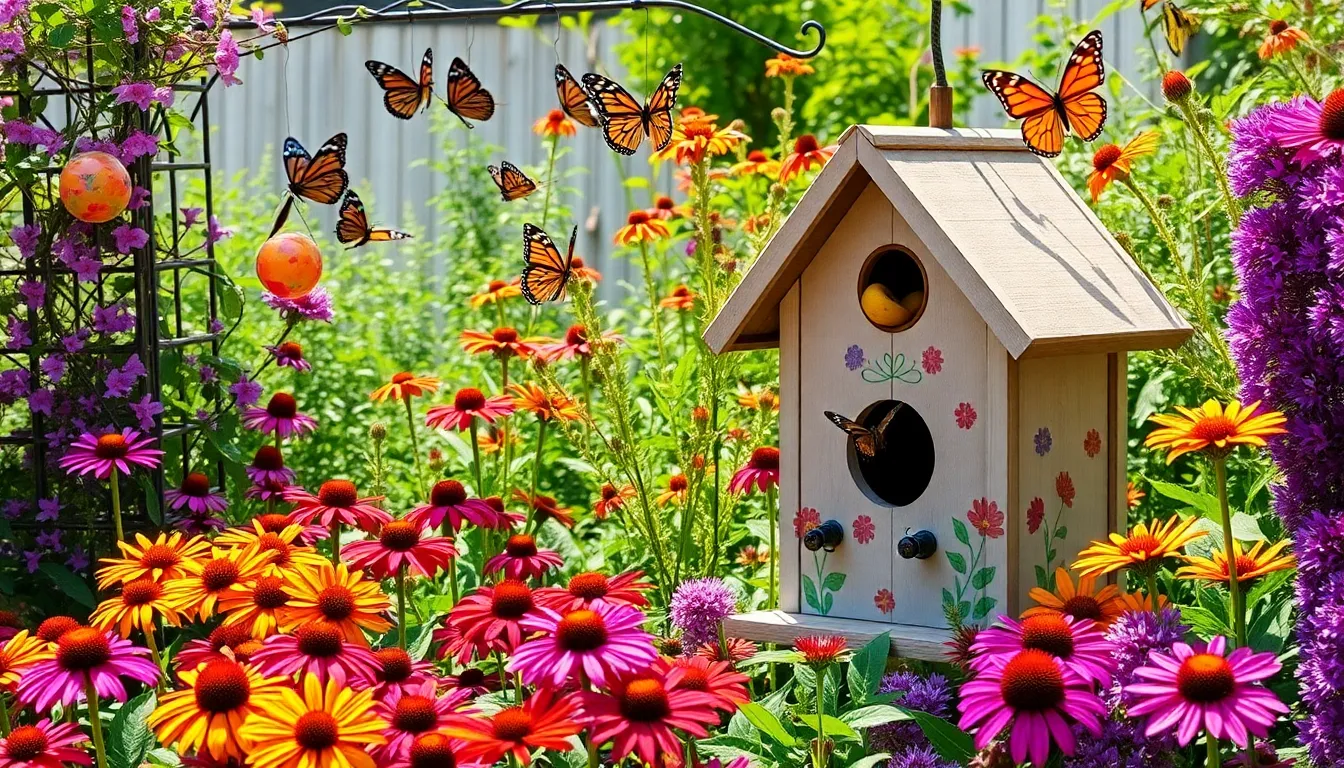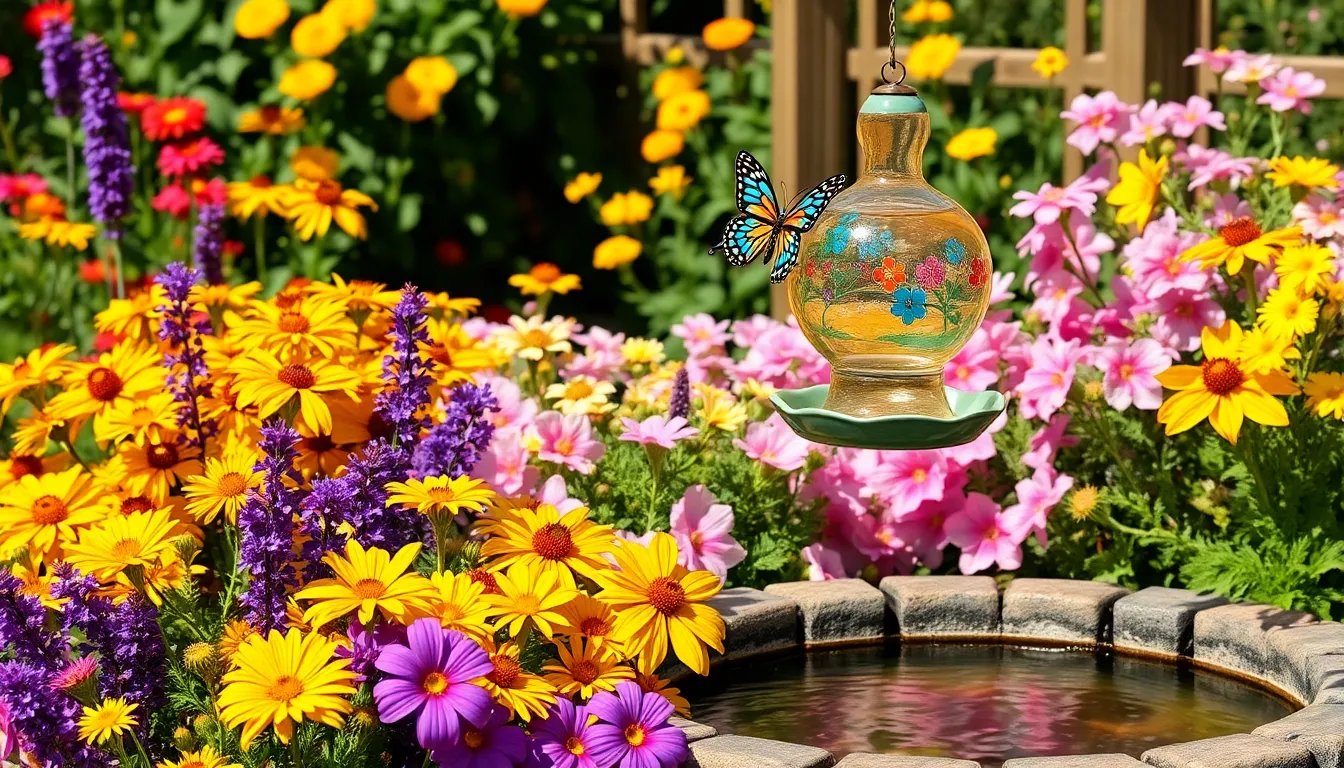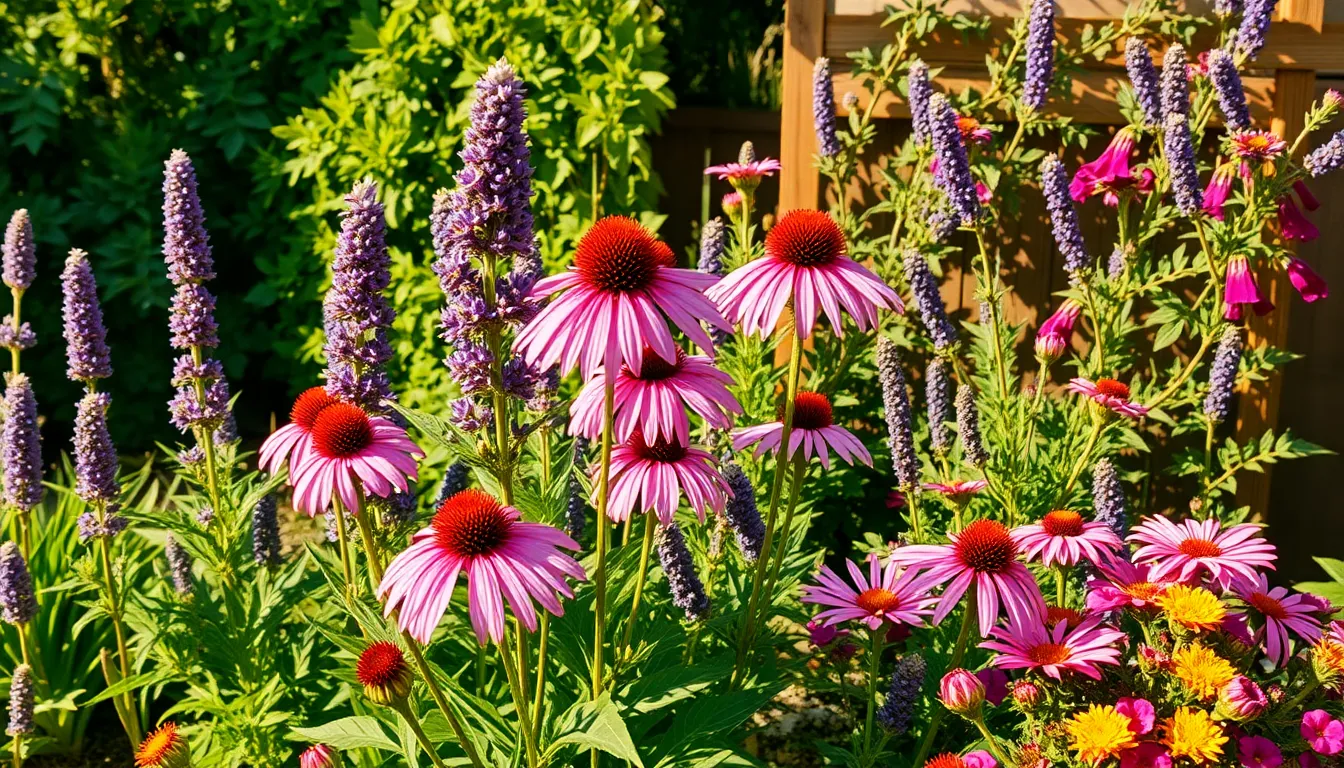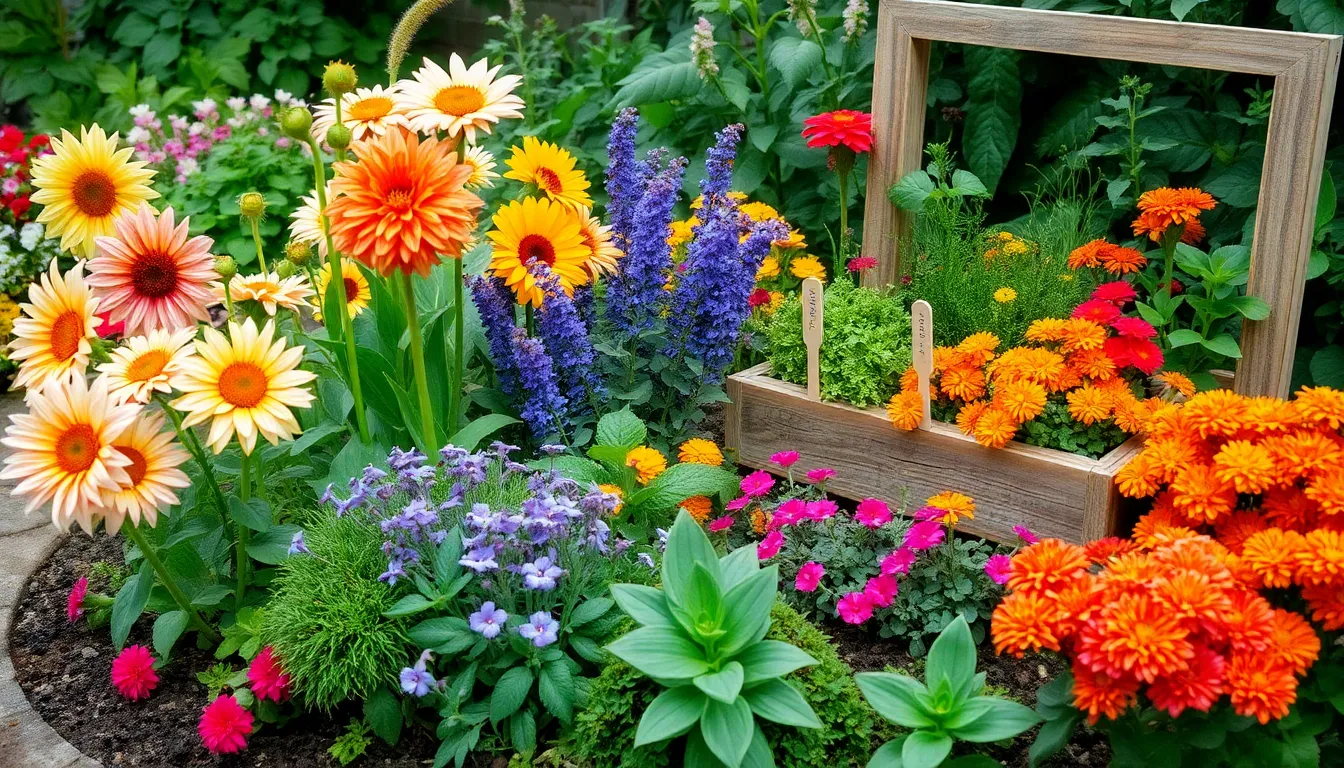Imagine stepping into your garden and being greeted by a flutter of vibrant wings, each one a testament to the delicate balance of nature that you’ve fostered right in your backyard. Creating a butterfly garden is more than just a whimsical endeavor; it’s an opportunity to transform your outdoor space into a sanctuary where beauty and biodiversity thrive hand in hand. Whether you’re planting your first seed or have a green thumb that’s already turned your yard into a lush paradise, inviting butterflies into your garden is a rewarding venture that promises both ecological benefits and personal joy.
Butterflies are more than just enchanting visitors; they play a crucial role in pollinating plants and supporting our ecosystems. By understanding what butterflies need to flourish, you can create a haven that not only attracts these lovely creatures but also supports their lifecycle from caterpillar to chrysalis to butterfly. In this article, we’ll explore 13 unique essentials that will help you design and nurture a butterfly-friendly environment. From selecting the right plants to providing water sources, you’ll discover practical tips and insights that make butterfly gardening a delightful and accessible pursuit for anyone willing to dig in.
Choosing Butterfly-Friendly Plants
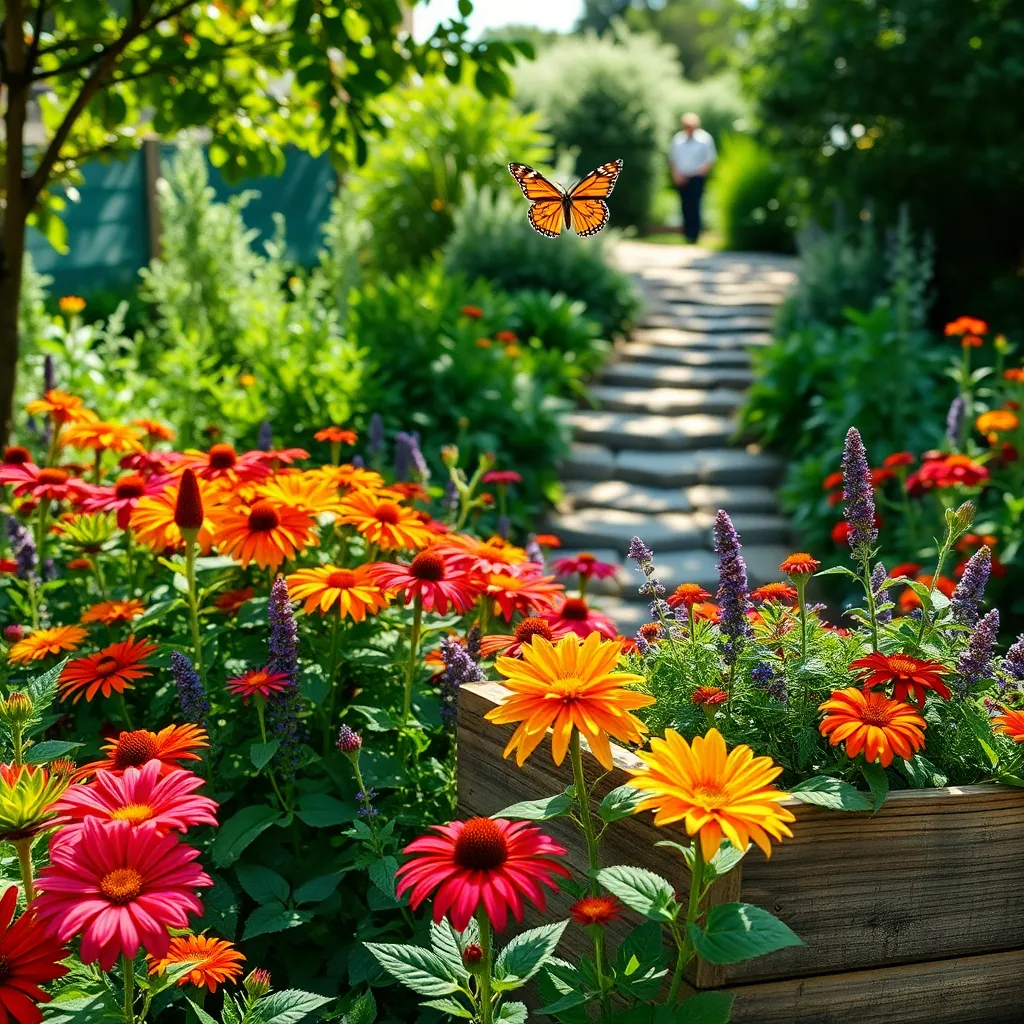
To create a thriving butterfly garden, start by selecting plants that attract both nectar-feeding adults and caterpillars. Consider planting milkweed, butterfly bush, and coneflowers, which are known to be excellent choices for drawing in butterflies.
Milkweed is not only a favorite of monarch butterflies but also provides a crucial habitat for their larvae. Plant milkweed in a sunny location with well-drained soil, and water it moderately to ensure healthy growth.
For those looking to add a splash of color, butterfly bush offers vibrant blooms that entice a variety of butterfly species. Ensure your butterfly bush gets full sun and is planted in fertile, moist, but well-drained soil, and prune it annually to encourage more blooms.
Experienced gardeners might want to use layered planting techniques to maximize space and create a more inviting environment for butterflies. Combine tall plants like Joe Pye weed with shorter ones like lantana to provide both nectar sources and resting spots within your garden.
Creating a Nectar-Rich Habitat
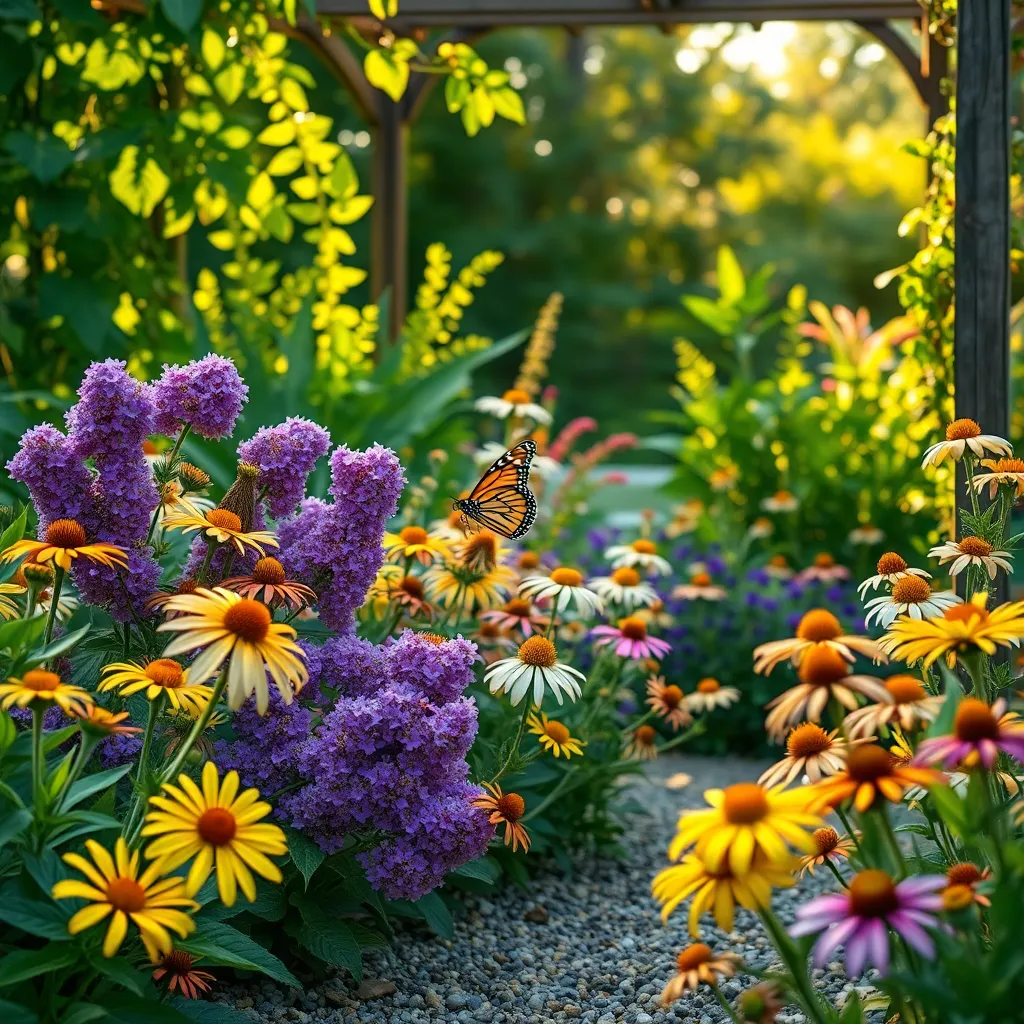
To create a nectar-rich habitat, it’s essential to plant a variety of flowers that bloom in different seasons. This ensures a constant supply of nectar, attracting butterflies throughout the year.
Start by incorporating native flowering plants, as they are well-adapted to your local climate and soil conditions. Native plants are often more resilient and require less maintenance, making them perfect for both beginners and experienced gardeners.
Consider planting in clusters to make it easier for butterflies to find the nectar sources. Clusters of the same plant species can be more visually appealing and are more attractive to butterflies who prefer to feed in one area.
For those with more gardening experience, try interplanting species that cater to both caterpillars and adult butterflies. This dual-purpose planting approach provides food for the entire lifecycle of the butterflies, supporting their populations more effectively.
Regularly deadhead flowers to encourage continued blooming, which ensures a steady supply of nectar. Deadheading is a simple process that involves removing spent blooms and can be done throughout the growing season for optimal results.
Ensure your soil is well-drained and enriched with organic matter to support healthy plant growth. A layer of mulch can help retain soil moisture and suppress weeds, reducing the amount of maintenance required.
Incorporating Host Plants for Caterpillars
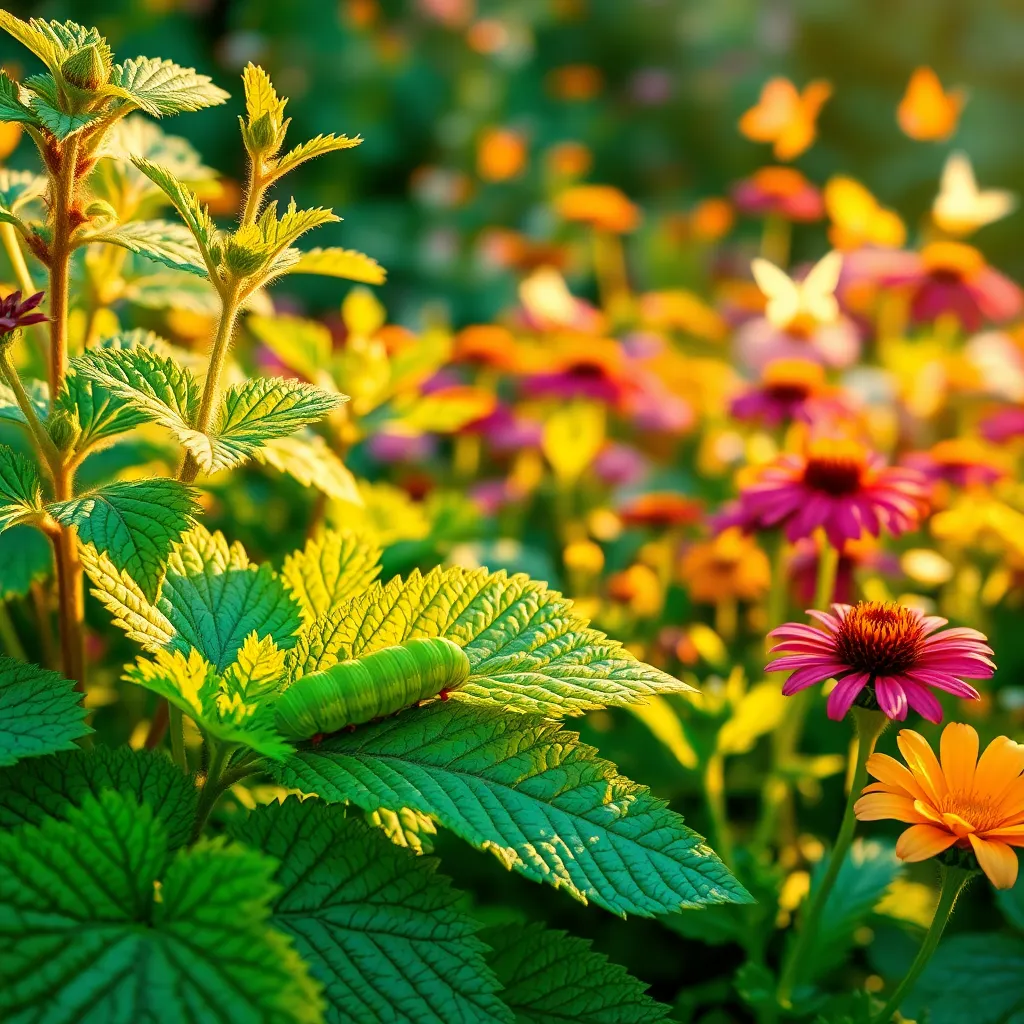
Incorporating host plants for caterpillars is a crucial step in creating a thriving butterfly garden. Caterpillars are the larval stage of butterflies, and they require specific plants to feed on before they metamorphose into beautiful butterflies.
Start by planting a variety of native host plants, as these are the preferred choice for local caterpillars. Common host plants include milkweed for monarchs, dill for swallowtails, and nettles for red admirals, ensuring a diverse butterfly population.
When selecting host plants, pay attention to the growing requirements to ensure they thrive in your garden. Most host plants prefer well-drained soil and full sun, so choose a location that receives at least six hours of sunlight each day.
Water host plants regularly, especially during dry spells, to keep them healthy for hungry caterpillars. Applying a layer of mulch around the base can help retain moisture and suppress weeds, creating an ideal habitat for young larvae.
For an advanced tip, consider planting in clusters to create a more inviting environment for butterflies. Grouping plants together makes it easier for butterflies to find them, increasing the chances of them laying eggs in your garden.
Designing a Sunlit Garden Space
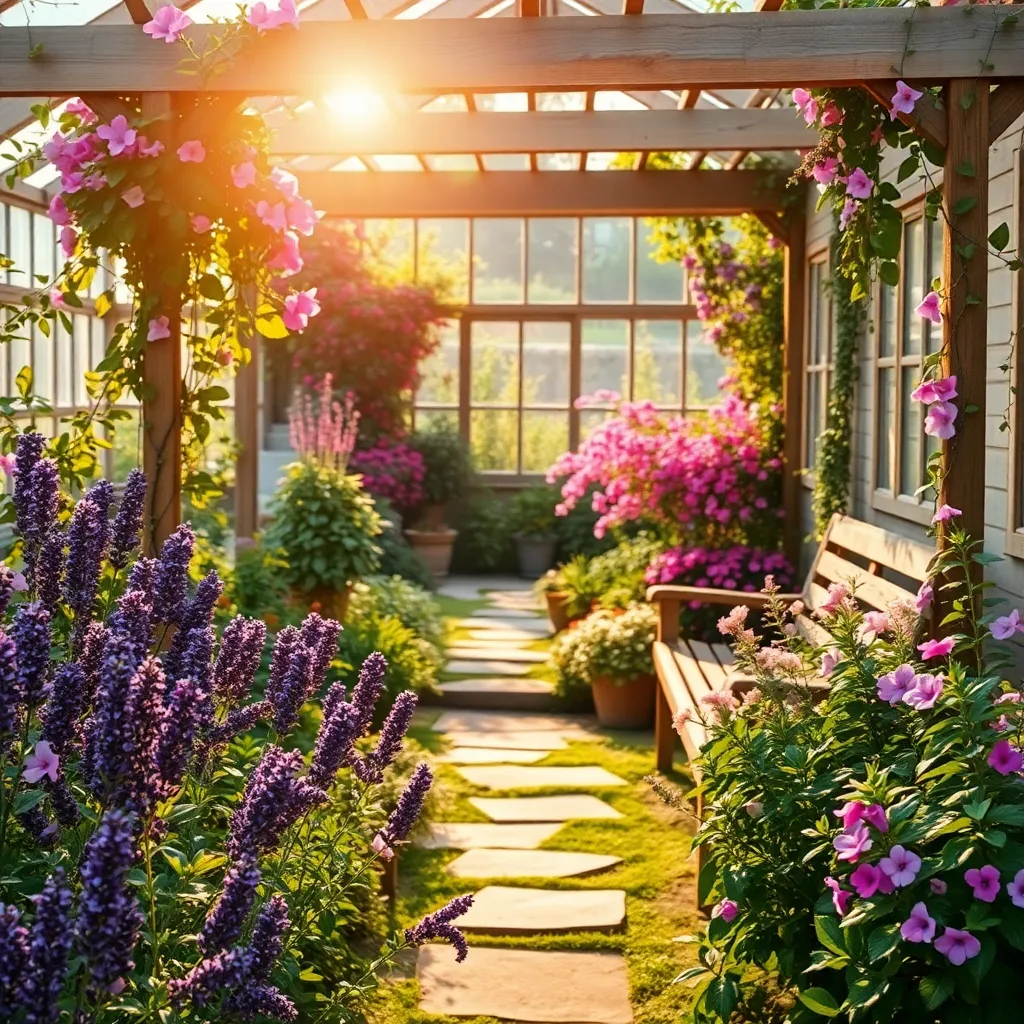
Designing a sunlit garden space is an excellent way to attract a variety of butterflies. Begin by selecting plants that thrive in full sun, as butterflies are most active in areas with abundant sunlight.
Consider planting a mix of nectar-rich flowers such as lantanas, zinnias, and marigolds. These plants not only provide a food source for butterflies but also add vibrant color to your garden.
Ensure the soil in your sunlit garden is well-draining to prevent root rot. Adding organic matter, like compost or well-rotted manure, can improve soil structure and nutrient content, benefiting both the plants and visiting butterflies.
Watering is crucial, especially in sunny spots where soil can dry out quickly. Aim to water deeply once or twice a week, allowing the soil to dry slightly between watering sessions to encourage deep root growth.
Providing Water Sources for Butterflies
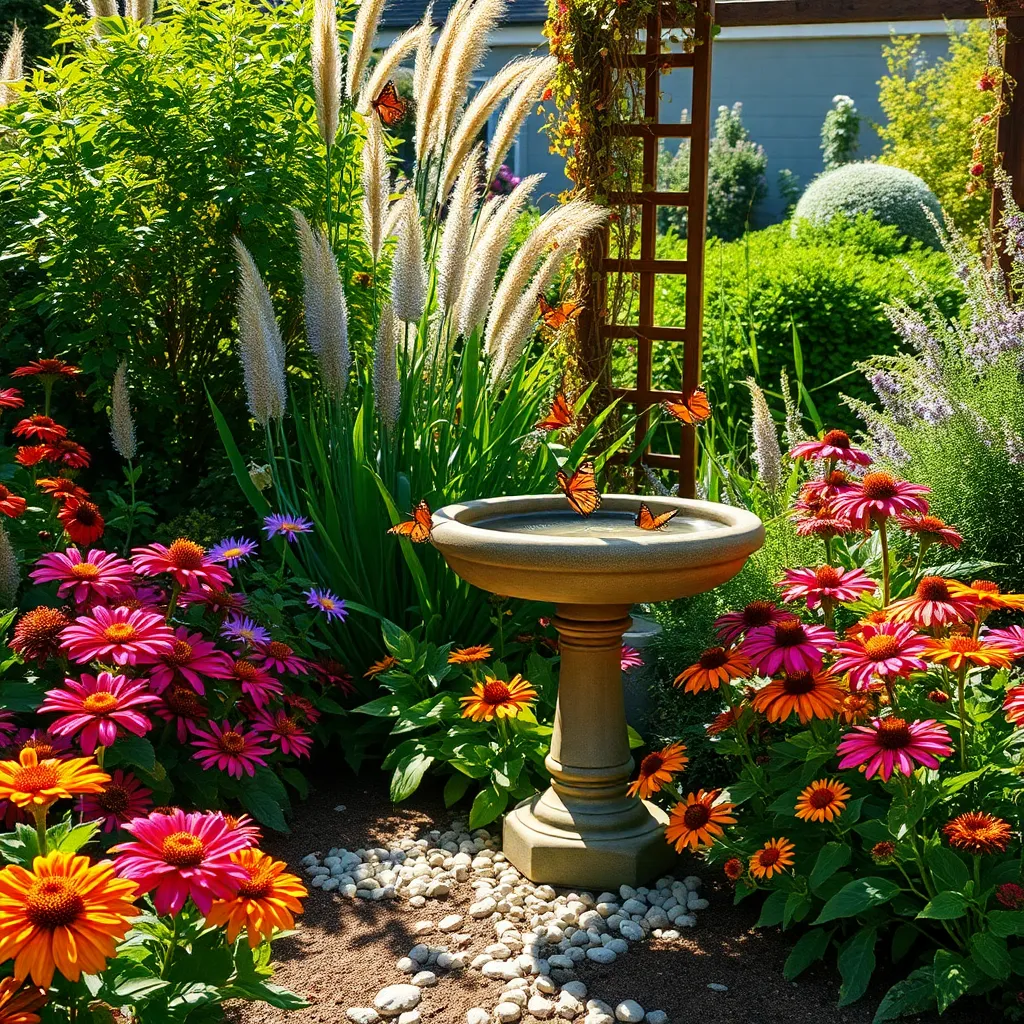
Adding water sources is crucial for attracting butterflies to your garden. Butterflies need water not just for hydration but also for obtaining essential minerals.
Consider creating a shallow puddling station using a dish or tray filled with sand and water. Ensure the water level is low enough so that butterflies can safely land and drink without getting their wings wet.
Placing flat stones or a sponge in the dish can provide perching spots for butterflies. These features allow butterflies to rest and absorb moisture without risk, making your garden a welcoming haven.
To enhance the mineral content of your water source, mix in a small amount of salt or wood ash. This step can be particularly beneficial in providing the nutrients that butterflies seek out in natural settings.
Advanced gardeners might consider planting moisture-loving plants like Joe-Pye weed or marsh milkweed near their water feature. These plants can thrive in damp conditions and further entice butterflies with their nectar-rich blooms.
Utilizing Natural Pesticide Alternatives
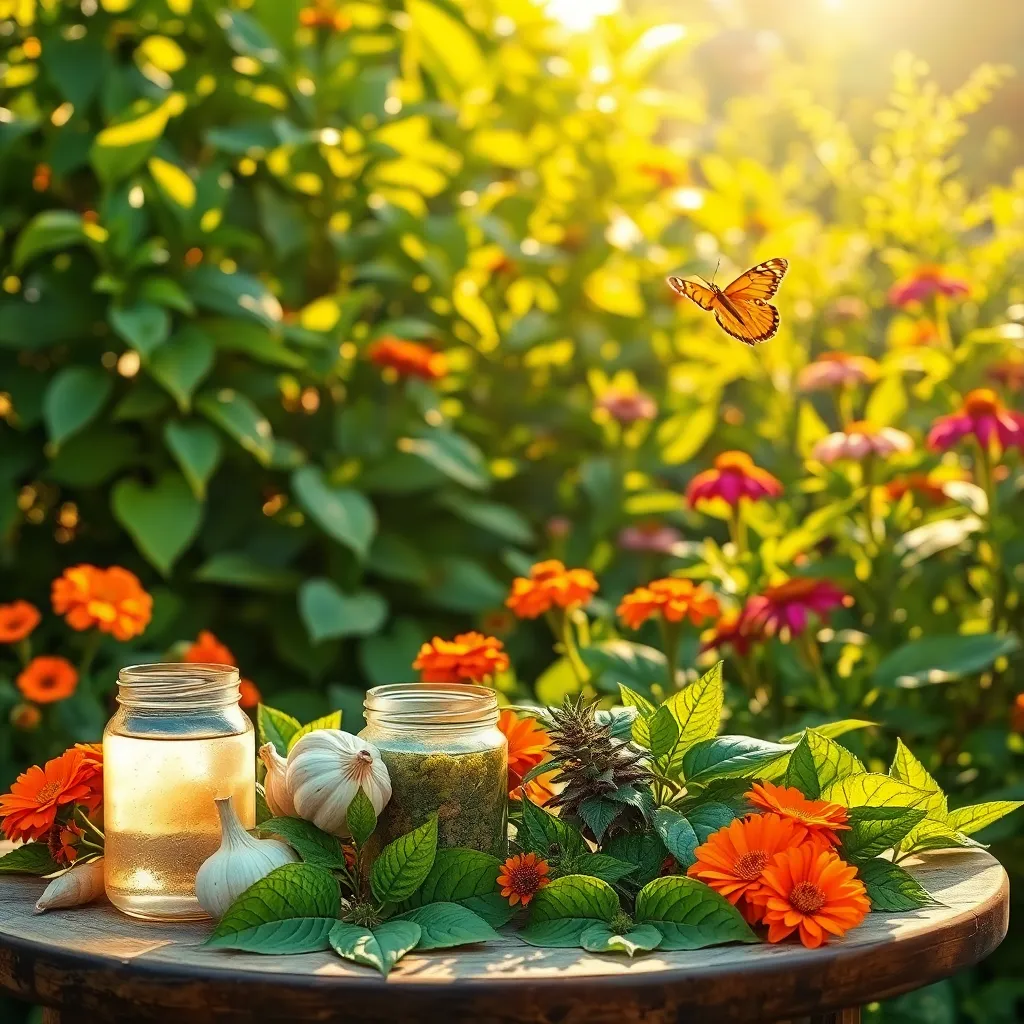
Embracing natural pesticide alternatives is not only environmentally friendly but also safer for butterflies visiting your garden. Using plants with natural pest-repellent properties can effectively reduce unwanted insects without harming beneficial species.
Consider planting marigolds, which release a scent that naturally repels many garden pests. These hardy flowers thrive in well-drained soil and full sun, making them an excellent addition to any butterfly garden.
Another effective method is employing homemade sprays using household ingredients. A simple mixture of water, dish soap, and a few drops of neem oil can deter many pests while remaining gentle on beneficial insects.
For an advanced technique, try companion planting to naturally manage pests. By pairing pest-repelling plants with your butterfly-friendly varieties, you can create a balanced ecosystem that minimizes the need for chemical interventions.
Crafting Sheltered Resting Areas
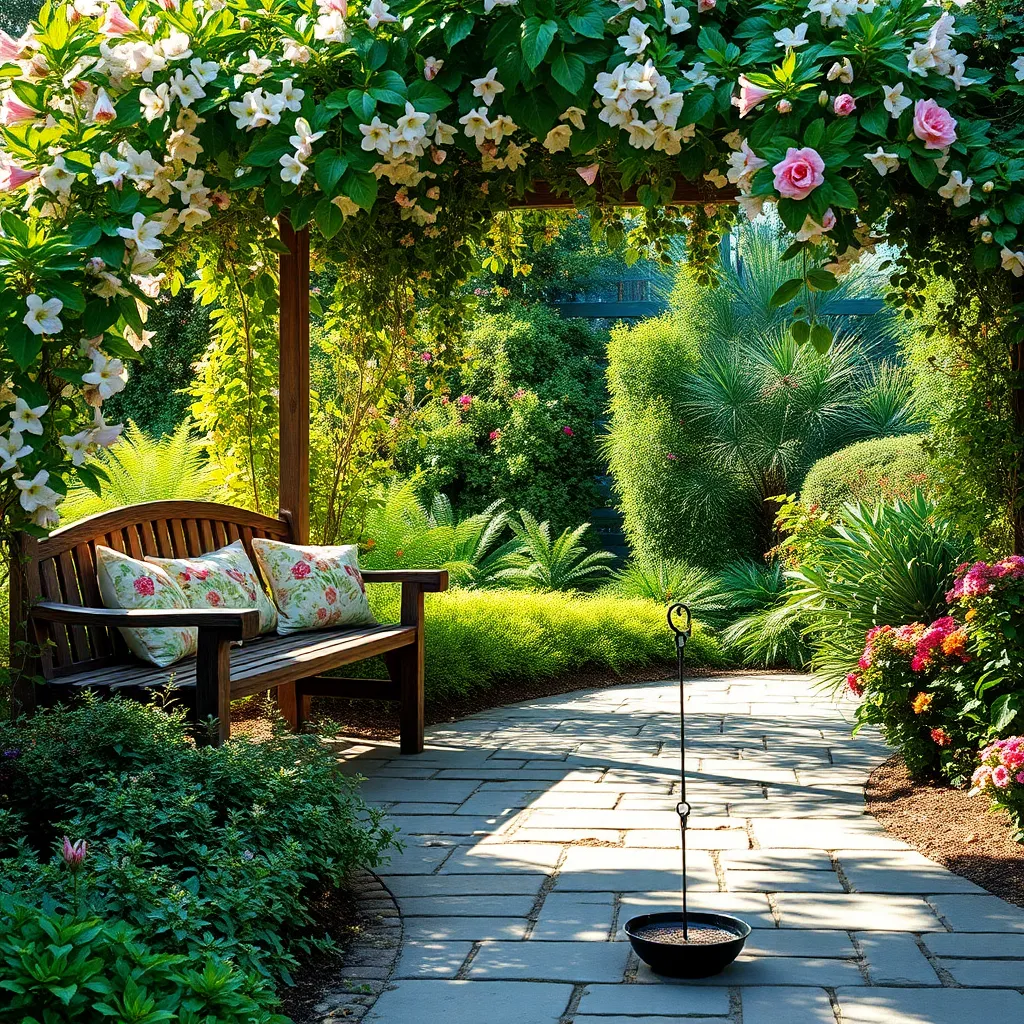
Creating sheltered resting areas in your butterfly garden is crucial for attracting and retaining these beautiful insects. Butterflies need respite from harsh weather conditions, and you can provide this by incorporating elements like trees, shrubs, and man-made structures.
Consider planting tall grasses and dense shrubs that offer both protection and a place for butterflies to perch. Opt for native plants, as they are more likely to attract local butterfly species and require less maintenance.
In addition to natural shelters, you can also build simple structures using logs or stones to create a variety of microhabitats. These structures not only provide resting spots but also help maintain a balanced ecosystem by offering habitats for other beneficial wildlife.
To enhance these areas, place flat stones in sunny spots where butterflies can bask and warm their wings. Regularly check these stones to ensure they are clean and free of debris, keeping them welcoming and effective.
Selecting Vibrant Plant Varieties
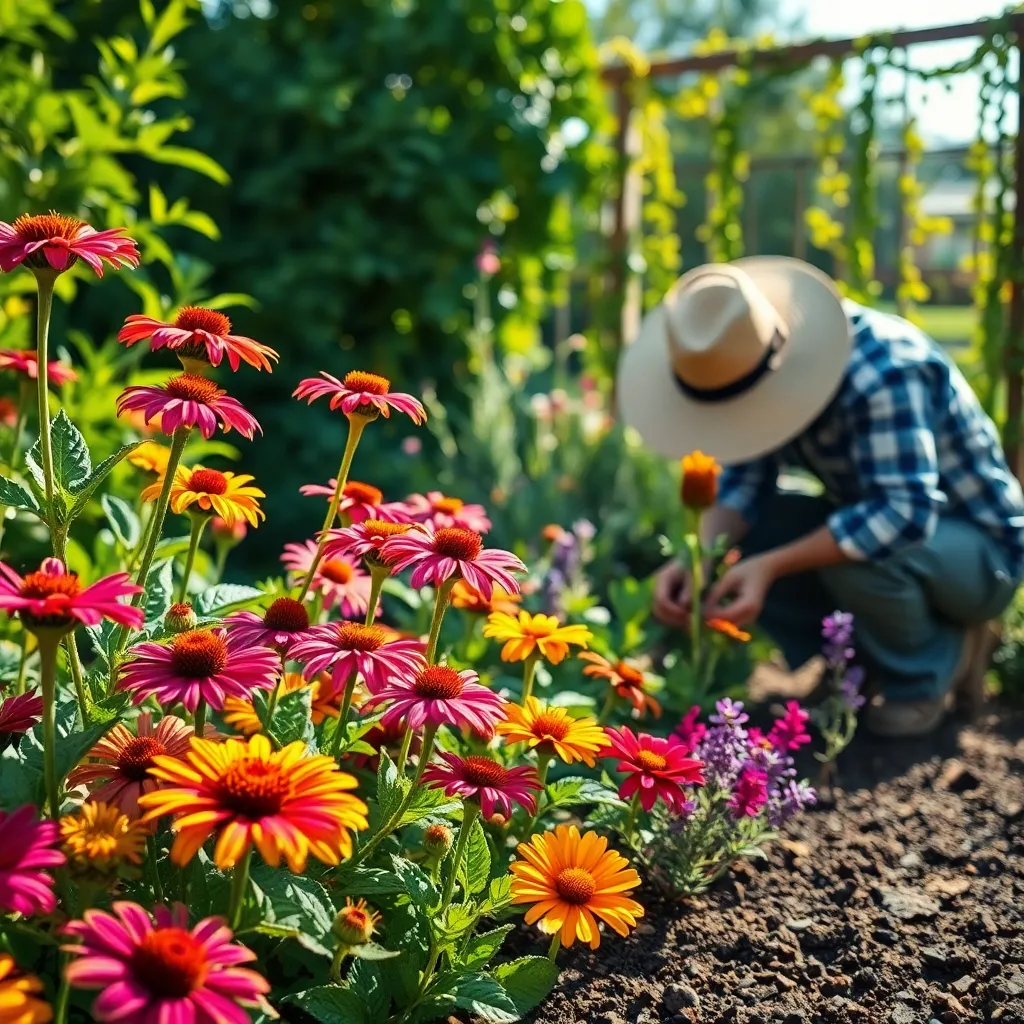
When selecting vibrant plant varieties for your butterfly garden, focus on those that produce colorful blooms and provide year-round nectar. Plants like milkweed, zinnias, and coneflowers are excellent choices, as they attract a wide range of butterfly species.
It’s important to consider the growing conditions that each plant variety requires. Ensure that you plant them in well-draining soil and provide at least six hours of sunlight daily for optimal growth and flowering.
For beginners, starting with hardy perennial varieties can be an easy way to ensure success. These types of plants, such as echinacea and asters, are not only vibrant but also require minimal maintenance once established.
Experienced gardeners might experiment with annuals that offer unique colors or forms, like cosmos or lantanas, which can add dynamic beauty to the garden. Remember to deadhead spent flowers regularly to encourage continuous blooms throughout the season.
Incorporating a mix of both nectar and host plants ensures butterflies have the resources they need for all stages of their lifecycle. Host plants like dill or parsley are essential for caterpillars and can be placed near your flowering plants to complete the habitat.
Integrating Native Plant Species
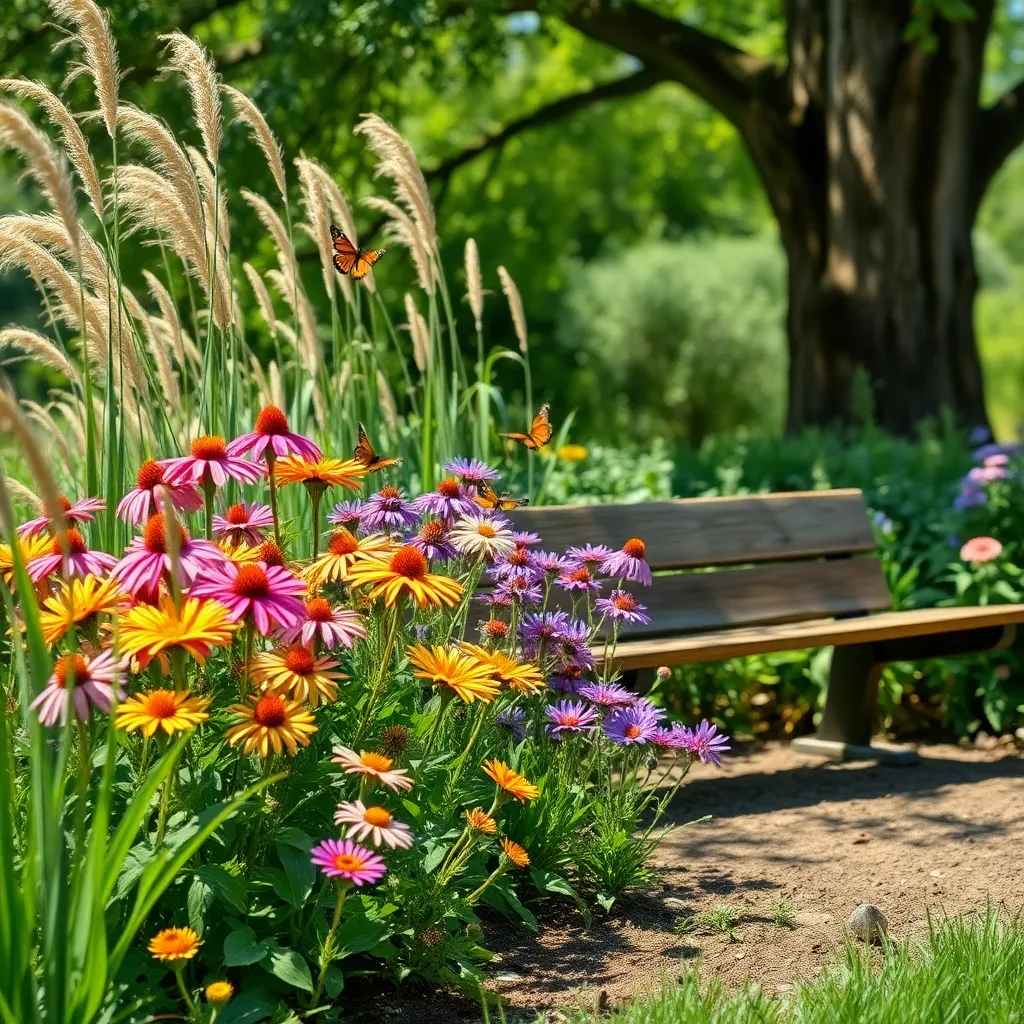
Integrating native plant species into your butterfly garden not only enhances its beauty but also supports local wildlife. Native plants are adapted to your region’s climate, making them generally lower maintenance and more resilient to local pests and diseases.
Start by researching which native plants naturally attract butterflies in your area. Use resources like local extension offices or native plant societies to find region-specific plant lists that are suited to your climate and soil type.
Consider planting species such as milkweed, which is a favorite for monarch butterflies and thrives in well-draining soil under full sun. For gardeners in wetter climates, Joe-Pye weed is a fantastic option, as it thrives in moist soil and partial shade, offering a perfect landing pad for butterflies.
When planting, remember to group similar species together to create a more natural look and ensure easier maintenance. Regularly water new plantings until they are established; once mature, most native species require less frequent watering, making them an environmentally friendly choice.
Maintaining Seasonal Plant Diversity
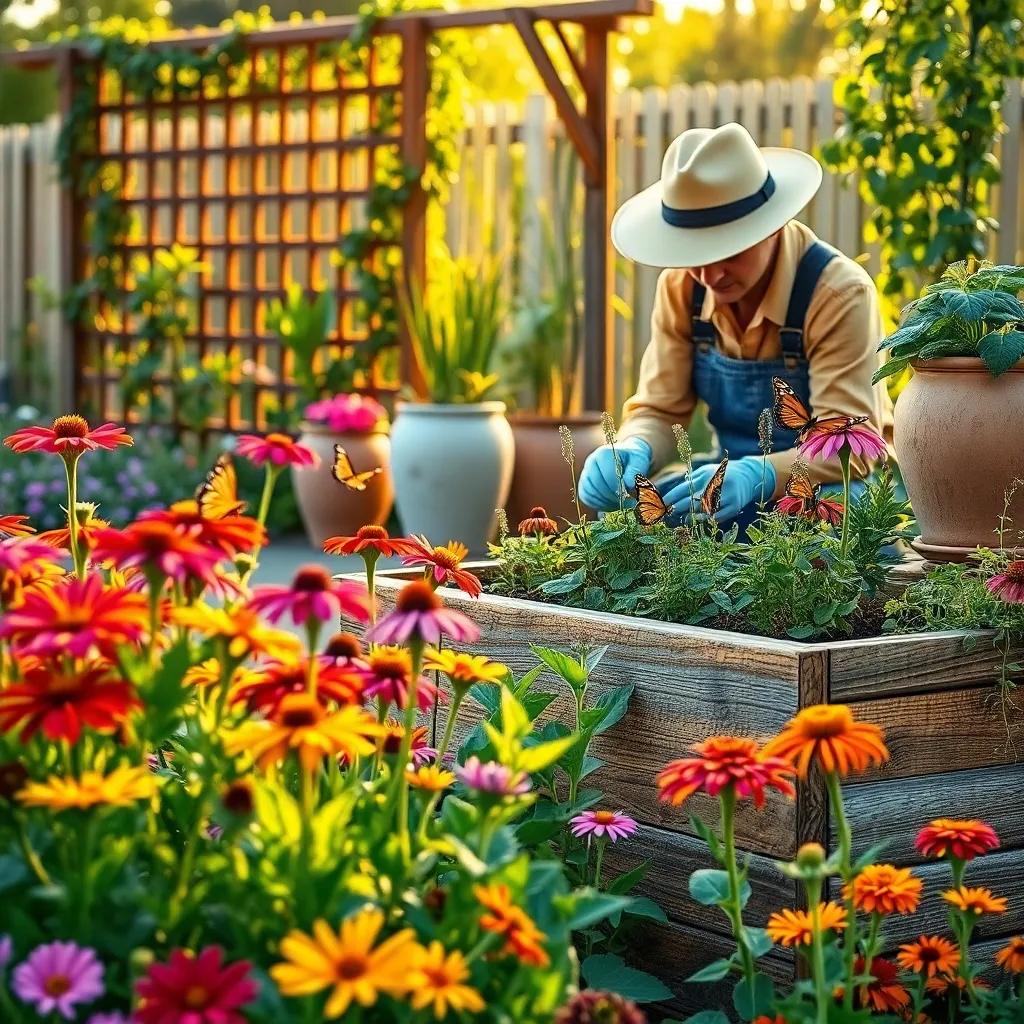
Diversifying your butterfly garden with seasonal plants not only enhances its beauty but also supports a thriving ecosystem for pollinators. Start by planning a mix of plants that bloom at different times of the year, ensuring continuous nectar sources for butterflies.
To maintain seasonal diversity, choose a combination of annuals, perennials, and biennials that cater to different seasonal blooming periods. For instance, plant early-blooming perennials like columbines alongside summer-flowering annuals such as zinnias.
Understanding the specific needs of each plant is crucial for success. Most flowering plants thrive in well-drained soil enriched with organic matter, so consider adding compost at the start of each season to improve soil structure and fertility.
Watering requirements will vary based on plant type and seasonal weather conditions. Typically, most flowering plants prefer to dry out slightly between waterings, but during hotter months, more frequent watering may be necessary to prevent wilting.
For advanced gardeners, consider implementing a succession planting strategy to maximize the use of space and resources. By replacing spent plants with new ones as the seasons change, you can maintain visual interest and provide continuous habitat for butterflies.
Encouraging Continuous Bloom Cycles
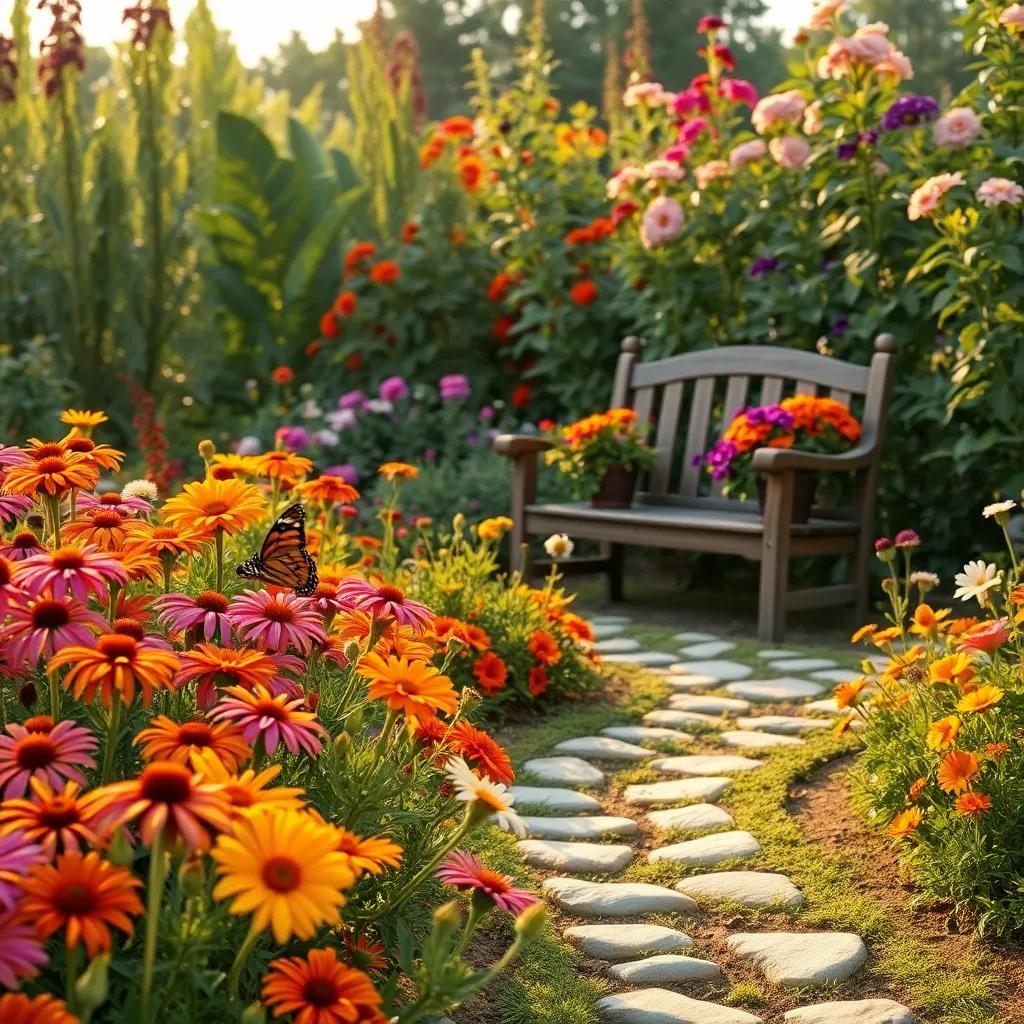
To encourage continuous bloom cycles in your butterfly garden, start by selecting plants known for their repeat blooming abilities. Perennials like Echinacea and Rudbeckia are excellent choices as they not only attract butterflies but also have extended blooming periods.
Deadheading, or removing spent flowers, is a simple technique that can significantly prolong the blooming season. By preventing seed formation, plants are encouraged to produce more flowers, ensuring a vibrant display throughout the growing season.
Incorporate a feeding routine using a balanced, slow-release fertilizer to provide consistent nutrients to your plants. Apply fertilizer every 6-8 weeks to maintain healthy growth and encourage prolific blooming, especially during peak flowering times.
For more advanced gardeners, consider practicing succession planting to maintain continuous blooms. This involves planting different species that bloom at staggered intervals, ensuring there’s always something in bloom to attract butterflies and maintain garden interest.
Building Butterfly-Friendly Structures
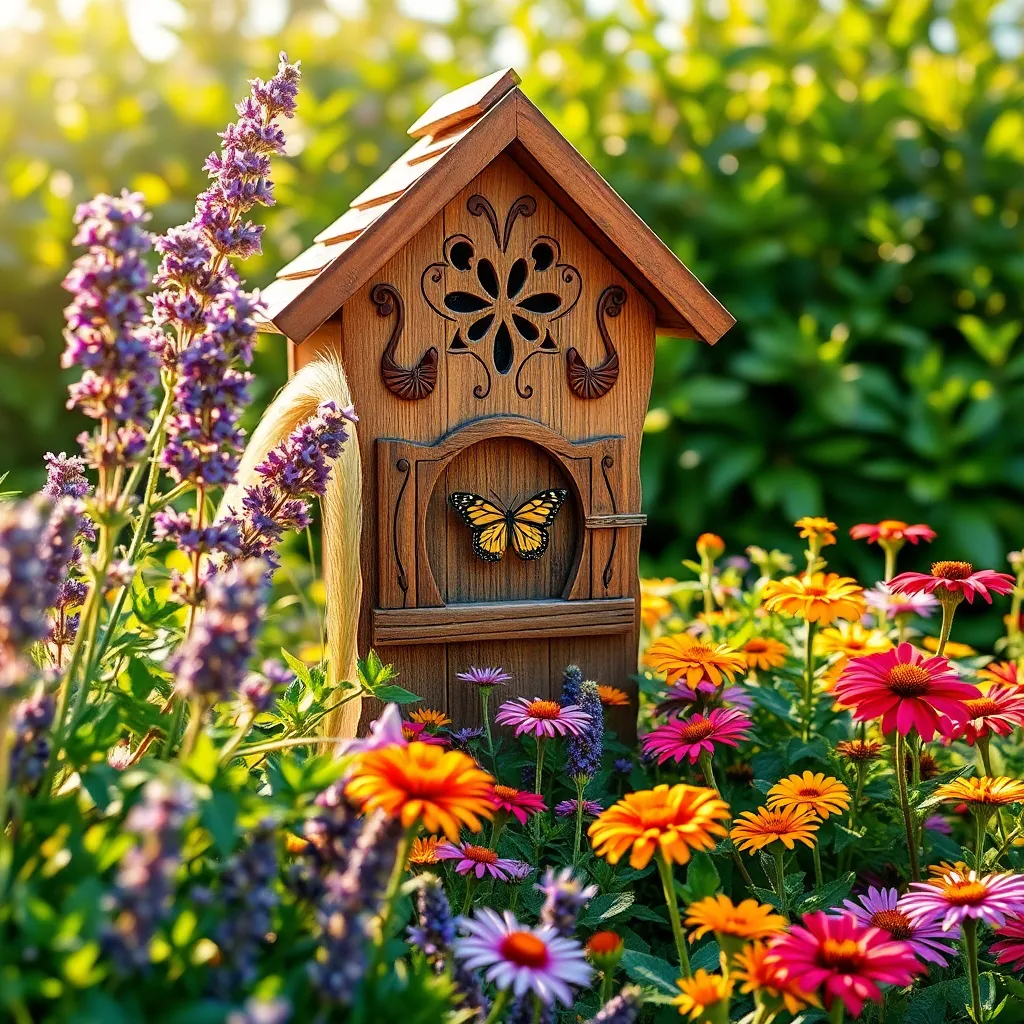
Creating butterfly-friendly structures in your garden can greatly enhance the habitat for these beautiful insects. Start by building a simple trellis or pergola to support climbing plants like clematis and honeysuckle, which provide both nectar and shelter.
Consider incorporating a butterfly house to offer protection against harsh weather. These structures are easy to build or purchase and should be placed in a sunny, sheltered spot to keep them warm and inviting.
For those who enjoy DIY projects, crafting a mud puddler can be a rewarding addition. This simple setup involves a shallow dish filled with sand and water, mimicking the natural puddles where butterflies sip minerals.
Advanced gardeners might integrate a water feature to attract butterflies with a gentle trickle or splash. A small fountain or birdbath can create the ideal environment, and adding flat stones around it offers perches for butterflies to rest and sunbathe.
Monitoring and Caring for Your Garden
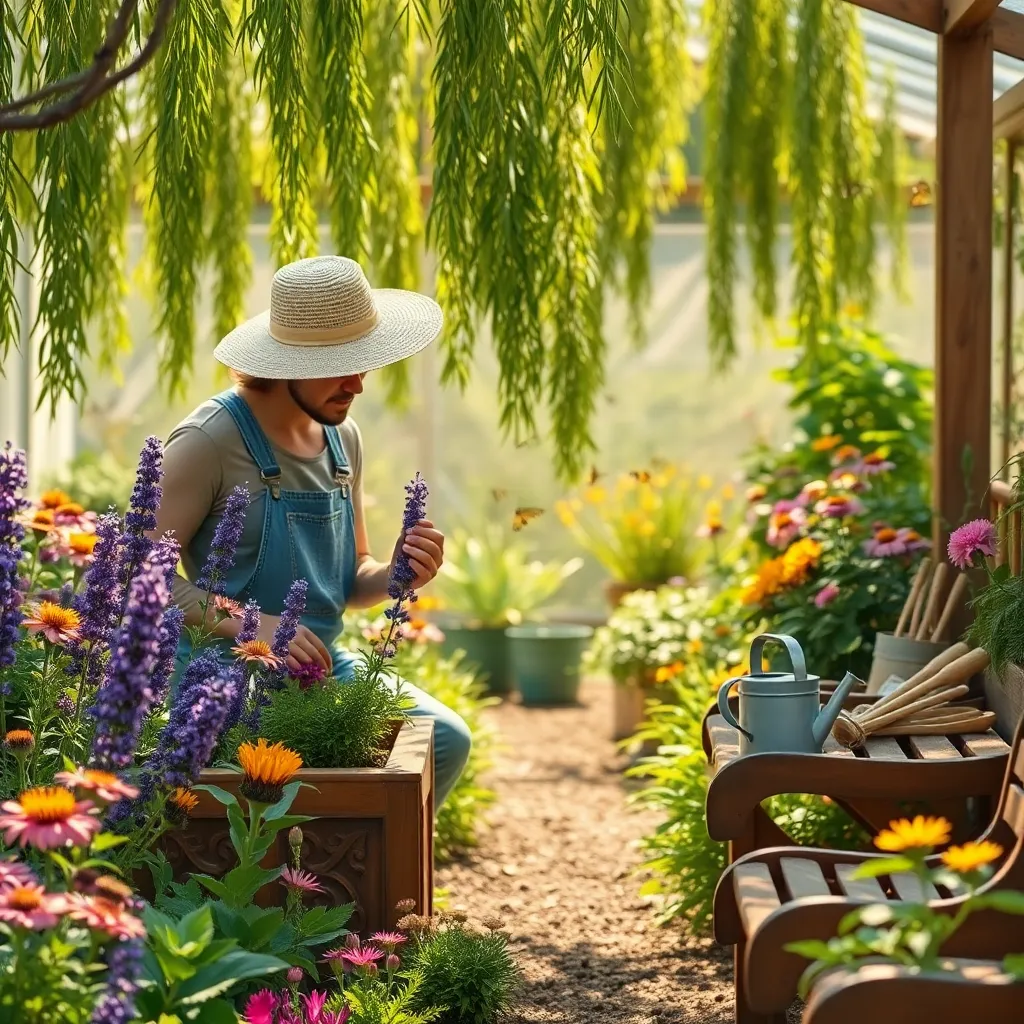
Monitoring your garden is crucial to maintaining a thriving butterfly habitat. Regularly inspect your plants for signs of pests or diseases, as these can quickly spread and harm butterfly populations.
Check the soil moisture to ensure your plants are getting the right amount of water. Butterfly gardens typically thrive in well-drained soil, so consider adding organic matter to improve drainage if needed.
Keep an eye on sunlight exposure, as butterflies are sun-loving creatures. Ensure that your garden receives at least six hours of direct sunlight daily to support both plants and butterflies.
For advanced care, consider implementing a schedule for rotating plants within your garden. This can help prevent soil depletion and maintain a healthy ecosystem for the butterflies.
Conclusion: Growing Success with These Plants
As we conclude our exploration of the ’13 Unique Butterfly Garden Essentials’ for nurturing flourishing relationships, let’s reflect on the key elements that can transform your relational space into a vibrant haven. We’ve journeyed through the importance of creating a nurturing environment, fostering open communication, and embracing growth through shared experiences. We’ve discussed the significance of trust, patience, and mutual respect, while also highlighting the value of celebrating individuality, fostering empathy, and establishing shared goals. Additionally, we’ve touched on the importance of adaptability, maintaining a sense of humor, and investing in quality time together.
Now, take a moment to choose one essential to focus on today—perhaps initiating a heartfelt conversation or planning a small, shared adventure. These small, intentional actions can lead to profound transformations.
I encourage you to bookmark this article as a valuable resource in your relationship toolkit. As you nurture your garden, remember that every relationship has the potential to bloom beautifully with care and commitment. Looking forward, know that every effort you make today lays the foundation for lasting connection and joy. Keep these essentials close, and watch your relationship flourish in ways you never imagined.

